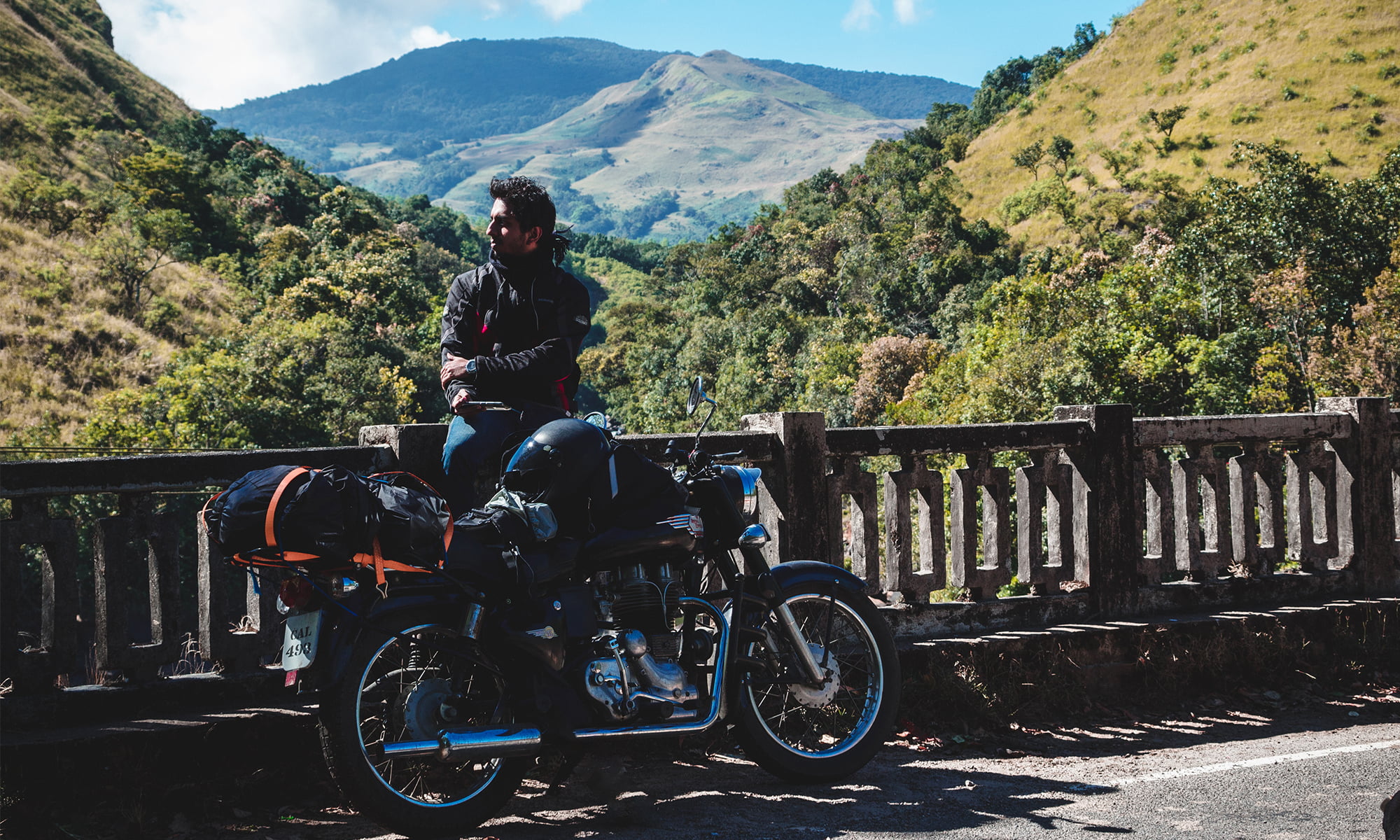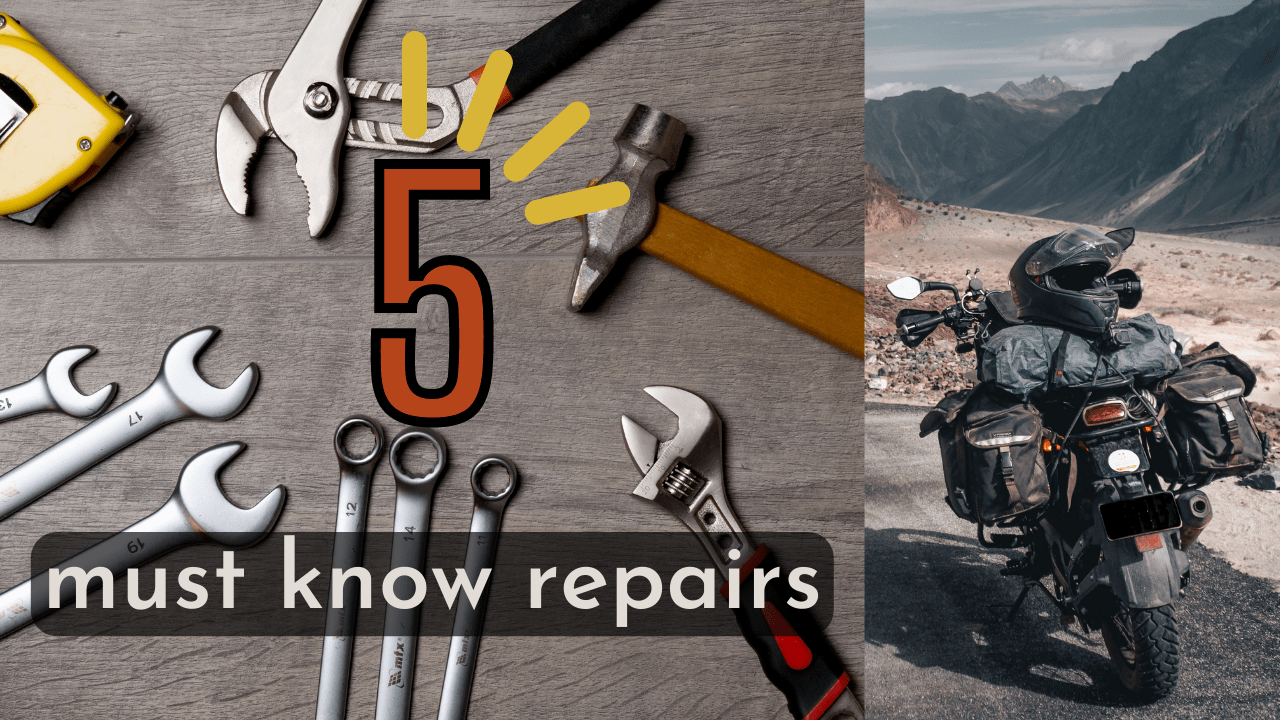Majority of the motorcycle owners never refer the user manual. It remains untouched in some cupboard in most of the households.
I’ve realised in a very hard way that user manuals are great help in learning basic motorcycle repairs and solving a majority of issues you come across in day to day life and during your long distance journeys.
I’ll suggest 5 basic motorcycle repairs that you must know before you venture out for any long distance highway touring or off-road sessions for those of you who don’t have the time and patience to go through the entire manual of the motorcycle.
1. Wheel removal and puncture repair
One small puncture can bring your trip to a standstill especially for those with tube tyres. I suffered a great deal in Pang at an altitude of 15000 feet and it took me 3 hours with the help of a local to fix it. I wish I knew prior.
You must go through the manual and practice removing and attaching your front and rear wheels at least once to get an idea in case of an emergency. Always carry a puncture kit with you and an inflator if possible.
2. Chain cleaning and lubrication
Drive chain will require cleaning and lubrication every 500 kms if not earlier when you are riding on off road terrain. Refer to the manual for a detailed explanation.
If you’d like to know more about the products I’ve found to be helpful, click here – https://bulletstrings.com/7-essential-motorcycle-care-products/
3. Clutch and brake lever free play adjustment & clutch wire and brake pad replacement
Clutch lever free play tends to become tight or loose as you drive more kms. So is the case with brake pads. You need to replace the break pads frequently when you are in for a long haul.
In case the clutch wire snaps, you’ll need to learn to replace and route the wire properly, all of which are explained in the manual.
4. Headlamp, fuse and spark plug replacement
You should carry a spare and you need to know how to replace them in case your headlight or any of the fuse blows off or if there’s something wrong with the spark plug. All these skills can come in handy not only in trips but also in saving a trip to the service centre.
5. Engine oil change
Knowing how to replace the engine oil is not a must as modern motorcycles don’t have oil leakage and require oil change less frequently. Knowing how to change the engine oil can help you skip periodic service centre visits. This skill will come in handy during trips that exceed the distance before the oil change.
To know what you should carry on your bike trip to Ladakh, read here – https://bulletstrings.com/what-to-carry-for-a-ladakh-trip-on-a-motorcycle/
To know how to change the engine oil of RE Himalayan, watch this video –
Watch the entire 5 Basic motorcycle repairs you must know before your Ladakh trip summed up in a video here –
Frequently Asked Questions (FAQs)
What is the most important maintenance on a motorcycle?
Periodically checking the tyre pressure, oil levels and chain lubrication are the most important maintenance on a motorcycle.
How often should you change oil on motorcycle?
Engine oil changing interval varies from motorcycle to motorcycle. On average, it’s better to change engine oil every 7000 – 10000 Kms. Refer to your service manual for details.
Is WD 40 good for motorcycle?
WD 40 is an excellent product which can be used on a motorcycle for a wide variety of purposes like chain cleaning, lubing pivoting parts and keeping off rust from exposed metal parts and cables.
How often should you change air filter on motorcycle?
If the air filter is periodically cleaned and maintained well, it’ll need replacement every 20000 kms only. Refer your service manual for your bike’s specific intervals.
What all items should be included in a tube puncture kit?
Rubber patches, rubber glue, sand paper, tube valves and a tyre wrench should be present in a tube puncture kit.
- 7 Things to do in Leh while you are acclimatizing
- Motorcycle Riding Gear I Use – A Review
- My Motorcycle Luggage System
- My Vlogging Gear Setup – A Review
- 7 Essential Motorcycle Care Products To Maintain Your Motorcycle
- Should You Buy The Himalayan? The Good, Bad & The Ugly
- Must Have Accessories On The Royal Enfield Himalayan
- Know everything about Acute Mountain Sickness (AMS) before your Ladakh trip
- How expensive is a Ladakh trip on a motorcycle? Ladakh bike trip budget
- What to carry for a Ladakh trip on a motorcycle / bike?




